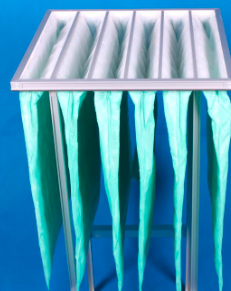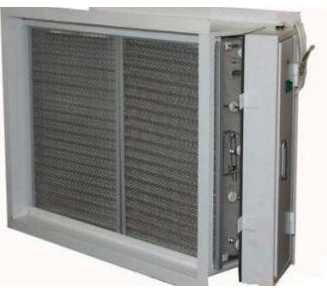Product Inspection
Summary:
In recent years, an increasing number of foreign customers have requested domestic manufacturers to provide ASHRAE 52.2 test reports when purchasing filters and air purifiers. Shangdu Certification has also assisted several export enterprises in obtaining this test report.\n\n**Introduction to ASHRAE 52.2 Standard**\nASHRAE 52.2 - "Method of Testing General Ventilation Air-Cleaning Devices for Removal Efficiency by Particle Size" specifies the method for measuring and reporting particle size efficiency in the range of 0.3 to 10 micrometers. Efficiency data is derived from measuring 12 sets of particle sizes. The particle size efficiency is measured on clean filter samples and then re-measured after loading with five different amounts of dust. The loading dust is ASHRAE synthetic test dust, and each standard has different dust sampling methods. In the subsequent six efficiency determinations, the lowest efficiency in each group of particle sizes is observed and converted into a new value called the minimum combined efficiency. These 12 values are then divided into three groups based on particle size ranges, with four values in each group. The three groups include particle size ranges of 0.3-1.0 micrometers, 1.0-3.0 micrometers, and 3.0-10.0 micrometers. The average value of each group of four values is taken, resulting in three combined average efficiencies, denoted as E1, E2, and E3. These three combined average efficiencies are then compared with the requirements of ASHRAE 52.2 Table 12-1 to determine the minimum efficiency reporting value, commonly referred to as MERV. This single number represents the lowest efficiency throughout the testing process. Additionally, the standard discusses the total amount of dust that the filter can retain before reaching its final resistance, known as dust holding capacity (DHC).\n\n**Applicable Products for ASHRAE 52.2**\n- General air filters\n- Electrostatic filters\n- Air purifiers\n\nThe International Organization for Standardization (ISO) recently released a milestone air filtration industry standard - ISO 16890, which defines the testing procedures and classification methods for air filters used in general ventilation equipment. This new standard provides an opportunity for global harmonization of air filtration industry standards for the first time, replacing the dominant EN 779:2012 in Europe. In Asia and the Middle East, both standards coexist. With the introduction of the new ISO 16890 testing standard, filter efficiency will be determined based on classifications such as PM1, PM2.5, and PM10. This ensures that filters are evaluated more specifically based on their actual performance. Compared to the previous two major standards, ISO 16890 incorporates advantages while discarding disadvantages, proposing a very scientific testing standard and classification system. The most significant advantage is that the efficiency testing of filters must be grouped by particulate matter, with filter efficiency determined by the classifications PM1, PM2.5, and PM10.\n\n**Content of ISO 16890 Standard**\nThe standard consists of four parts: 1) Technical specifications, requirements, and classification system based on particle size filtration efficiency; 2) Classification efficiency testing and flow resistance testing; 3) Determination of weight efficiency and the relationship between flow resistance and dust holding capacity changes; 4) Electrostatic elimination methods and determination of minimum classification testing efficiency.\n\n**Scope of ISO 16890**\n- Applicable products: General air filters, electrostatic filters (partially measurable);\n- Applicable range: Airflow 900 m3/h - 5400 m3/h, outlet size: no more than 610mm x 610mm.\n\n**Differences Between ISO 16890 and Existing Standards**\n1. Compared to existing standards, the new testing methods have higher requirements in multiple aspects. This will raise the performance standards for filters, thereby improving indoor air quality and protecting human health.\n2. The new testing methods are closer to the operational performance of air filters in real application environments.\n3. The classification method targets the performance of filters for three different particle size categories (PM1, PM2.5, PM10).\n4. Importantly, the smallest particle size category, commonly referred to as PM1, consists of ultrafine particles that are most harmful to human health.\n\n**Other Filter Standards**\nNingbo Shangdu Certification is dedicated to the development and research of various testing standards for air filters, and also provides testing for the following standards for a wide range of customers.\n- EN 779:2002 "Determination of Filtration Performance of Air Filters for General Ventilation"\n- EN 1822 "High Efficiency Air Filters (EPA, HEPA, and ULPA)"\n- ISO 29461 "Intake Filtration Systems for Rotating Machinery"\n- ISO 29463 "High-Efficiency Filters and Filter Media for Removing Particles from Air"\n\nAdditionally, we also provide FM, UL, EUROVENT, CE certifications for many filter manufacturers.
In recent years, more and more foreign customers have requested domestic manufacturers to provide ASHRAE 52.2 test reports when purchasing filters and air purifiers. Shangdu Certification has also assisted many export enterprises in obtaining this test report.
Introduction to ASHRAE 52.2 Standard
ASHRAE 52.2 - "Method of Testing General Ventilation Air-Cleaning Devices for Removal Efficiency by Particle Size" specifies the method for measuring and reporting particle size efficiency in the range of 0.3 to 10 micrometers. Efficiency data is derived from measuring 12 sets of particle sizes. The particle size efficiency is measured on clean filter samples and then re-measured after adding five different dust loading amounts. The loading dust is ASHRAE synthetic test dust, and each standard has different dust sampling. The lowest efficiency in each group of particle sizes is observed during six efficiency determinations, which is then converted into a new set of values called minimum combined efficiency. The 12 values are then divided into three groups of particle size ranges, each containing four values. The three groups include particle size ranges of 0.3 to 1.0 micrometers, 1.0 to 3.0 micrometers, and 3.0 to 10.0 micrometers. The average value of each group of four values is taken, resulting in three combined average efficiencies, represented as E1, E2, and E3.
These three combined average efficiencies are then compared with the requirements of ASHRAE 52.2 Table 12-1 to determine the minimum efficiency reporting value, commonly referred to as MERV. This single number represents the lowest efficiency throughout the testing process.In addition, the standard also discusses the relative total amount of dust that the filter can retain before reaching its final resistance, known as dust holding capacity (DHC).
Applicable Products of ASHRAE 52.2
General air filters
Electrostatic filters
Air purifiers


The International Organization for Standardization (ISO) released a landmark air filtration industry standard this week—ISO 16890, which defines the testing procedures and classification methods for air filters used in general ventilation equipment. This new standard provides an opportunity for global harmonization of air filtration industry standards for the first time, replacing the dominant EN 779:2012 in Europe. Both standards coexist in Asia and the Middle East.
With the introduction of the new ISO 16890 testing standard, the efficiency of filters will be determined based on classifications such as PM1, PM2.5, and PM10. This ensures that filters are evaluated more specifically based on their actual performance. Compared to the previous two major standards, ISO 16980 absorbs the advantages and discards the disadvantages, proposing a very scientific testing standard and classification system. The most significant advantage is that the efficiency testing of filters must be grouped according to particulate matter, and the efficiency of filters will be determined by the classifications of PM1, PM2.5, and PM10.
Content of ISO 16890 Standard
The standard consists of four parts:
1) Technical specifications, requirements, and classification system based on particle size filtration efficiency;
2) Classification efficiency testing and flow resistance testing;
3) Determination of weight efficiency and the relationship between flow resistance and dust holding capacity changes;
4) Methods for static charge elimination and determination of minimum classification testing efficiency.
Scope of ISO 16890
Applicable products: general air filters, part of electrostatic filters can be tested;
Applicable range: air volume 900 m3/h - 5400 m3/h, outlet size: no more than 610mm × 610mm.
What are the differences between the ISO 16890 standard and existing standards?
1. Compared to existing standards, the new testing method has higher requirements in multiple aspects. This will place higher demands on filter performance, thereby better improving indoor air quality and protecting human health.
2. The new testing method is closer to the operational performance of air filters in real application environments.
3. The classification method targets the filter performance for three different particle size categories (PM1, PM2.5, PM10).
4. More importantly, the smallest particle size segment among the three particulate matters, commonly referred to as PM1, is the ultrafine particulate matter that is most harmful to human health.
Other Filter Standards
Ningbo Shangdu Certification is committed to the development and research of various testing standards for air filters, and also provides testing for the following standards to a wide range of customers. Please feel free to call for consultation.
Contact number: 13736130593 (WeChat same number) Email: sales@shangdurz.com
- EN 779:2002 "Determination of the Filtration Performance of Air Filters for General Ventilation"
- EN 1822 "High Efficiency Air Filters (EPA, HEPA, and ULPA)"
- ISO 29461 "Intake Filtration Systems for Rotating Machinery"
- ISO 29463 "High Efficiency Filters and Filter Media for Removing Particles from Air"
At the same time, we also provide FM, UL, EUROVENT, CE certification, etc., for a wide range of filter manufacturers.
Key words:
过滤器标准
ASHRAE52.2
测试
过滤器测试
净化器测试
静电过滤器
Sanitary ware testing
Filter test
REACH test
Eu RoHS testing
Building materials testing
Food contact materials testing
Other testing items
Contact Us
Address:
Room 1116, Yitian Center Building, 121 Tongji Road, Jiangbei District, Ningbo City
Other product testing

